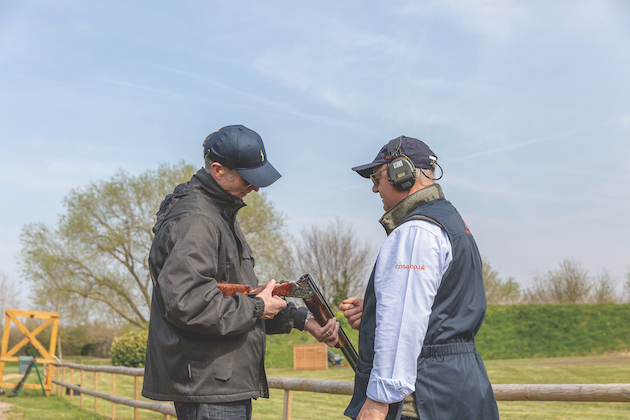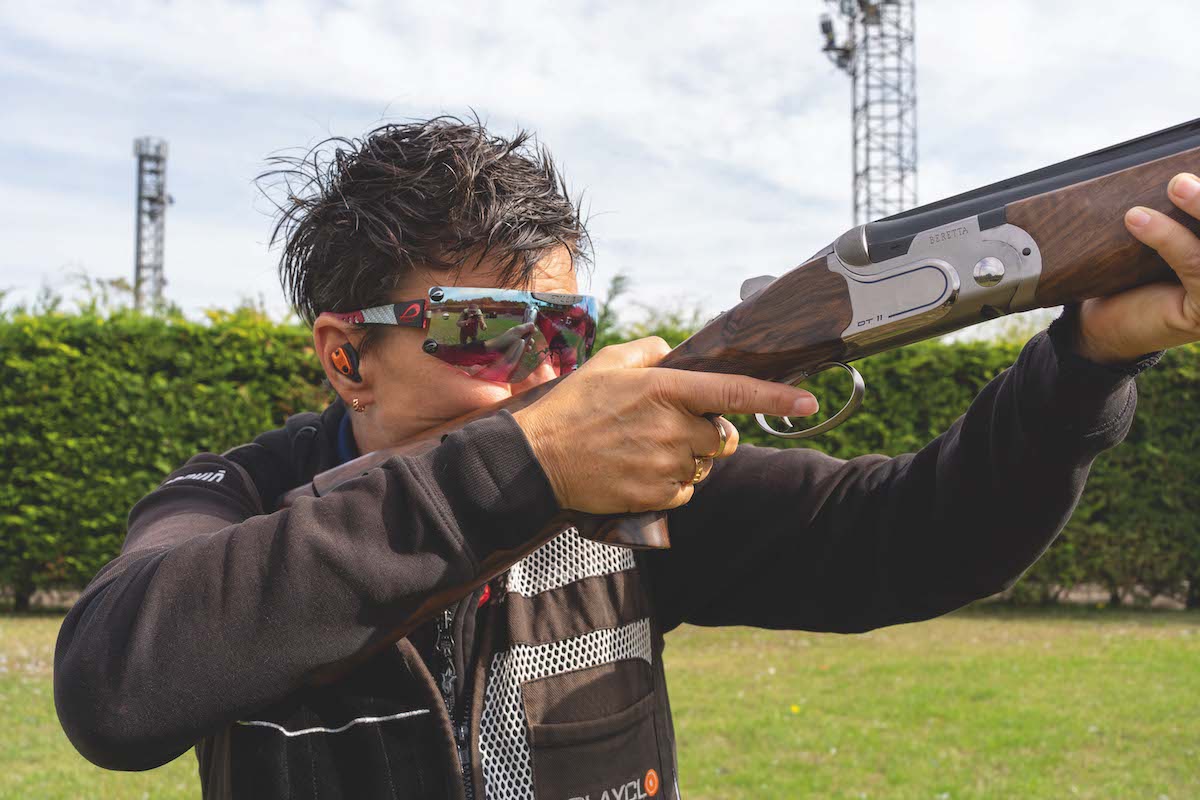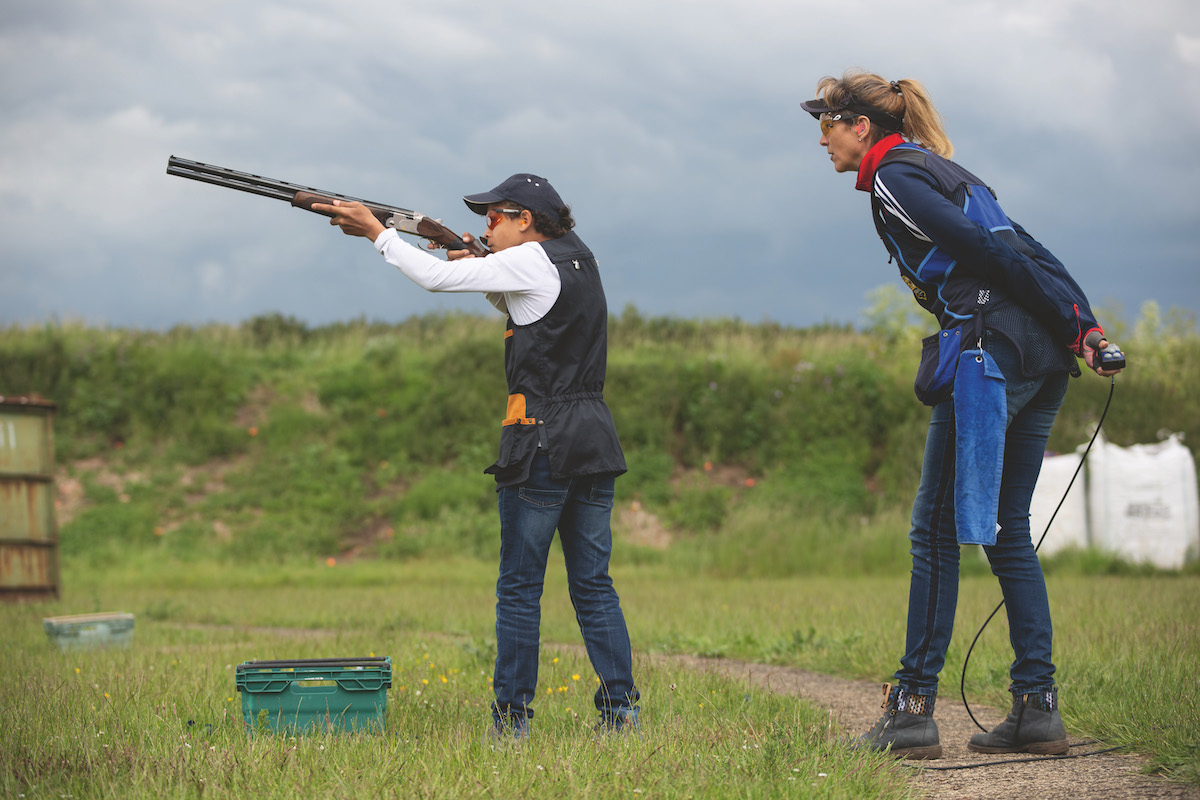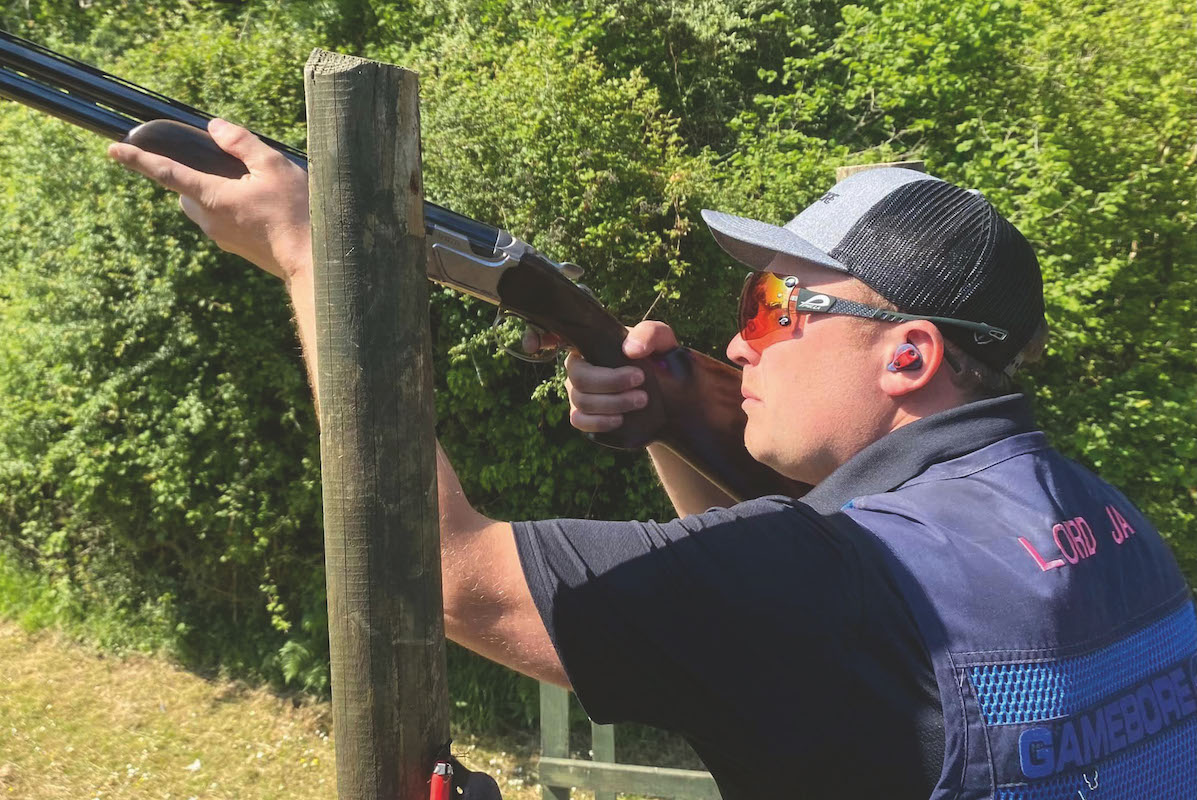Clayshooting competitions: Here’s how to shoot your way to success
Tony Bracci, an AAA Shot and instructor at Bisley Shooting Ground, guides you through a process that will take you from novice to competition-ready Shot

lesson in clayshooting competitions
When I’m preparing a relatively new clayshooter for clayshooting competitions my lessons follow a certain format.
Once we have gun, clay cartridges, hearing and eye protection sorted we get straight out onto the ground.
A lesson in clayshooting competitions
We begin shooting a few easy targets to warm up and check that everything is as it should be. Let’s say we are shooting a going-away target; once hit a few times I would ask the client to start the gun excessively low, then excessively high, or even off to the side. This will highlight the importance of the gun hold point. On a going-away target, starting excessively low can cause the gun to move too fast, resulting in a miss over the top, or to swing for too long, resulting in the swing fading and a failure to follow-through.
Starting with the gun too high can cause a lack of movement and follow-through, causing a miss behind as the target is shot with an almost static gun.
The idea is to show the client that having the right gun hold point is an advantage and to get them to start thinking where that position is. This also highlights the break point on targets and the importance of an efficient swing and follow-through.

Other targets
- Lead: Next, we move onto a crossing target and talk about lead and how to achieve it. Lead is a personal thing; I never talk about a measurement. Lead should be given with a moving gun and follow-through. We need to find a method that the client is happy using. When looking at the various methods we will be looking at different hold points and introducing visual pick-up points, which may be vary to the gun hold point depending on the target presentation. The gun hold point should create an efficient swing; the visual pick-up point may be further back to allow you to watch the target coming. The gun hold point should be on the same line as the target is moving on.
- Swing-through: The gun starts moving once the target has passed the hold point. Moving on the same line as the target is travelling on, catching up, brushing the bottom of the target, before moving in front to shoot and follow-through in one smooth action.
- Pull away: The gun locks onto the target as it passes the hold point and moves with it. Pulling away on the right line to shoot and follow-through.
- Maintained lead: The gun starts moving before the target gets to the gun, maintaining the required lead and moving on the right line to the break point where the shot is taken and follow-through. The speed of the gun and the perception of lead is connected. The faster the gun is moving the less perception of lead will be noticed. With swing-through and pull away the gun moves faster than the target, whereas with maintained lead the gun moves at the same speed as the target, possibly giving a greater perception of lead. This doesn’t mean that the gun should move as fast as you can move it; being able to control the line the gun is moving on and replicating the movement is important.
- The client should try all three methods and decide which one suits them best. We would be watching to make sure the swing is smooth and not a mixture of methods – starting behind, locking on then maintaining lead. The client should choose their preferred method and not have one enforced on them. Other methods can be introduced later on if needed. Next, the client should try their chosen method on a different target, possibly a crosser from the opposite direction, making sure they have a good hold point and good execution. A little bit of repetition can help to lock in good discipline and concentration.
A guide to the different clay shooting disciplines
New to clayshooting? This is what English Sporting, English Skeet and Trap shooting involve
What’s a good budget shotgun for clayshooting?
The first thing to consider when buying a first clay gun It’s crucial that you buy a gun which fits…
Follow the above routine and you’ll be able to move onto clayshooting competitions in due course from your days of being a novice.










